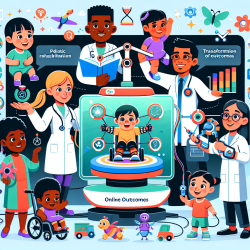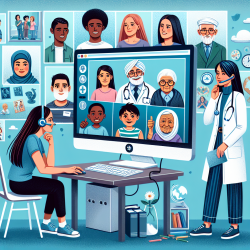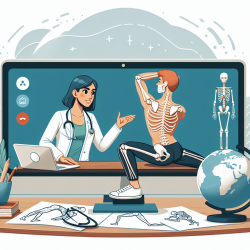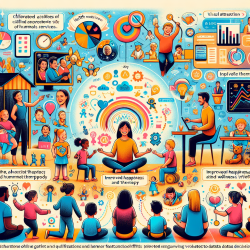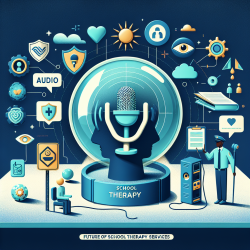The National Institute on Disability, Independent Living, and Rehabilitation Research (NIDILRR) has long been a beacon of innovation in the realm of rehabilitation technologies. Their Rehabilitation Engineering Research Centers (RERCs) have consistently pushed the envelope, bringing new solutions to the forefront to enhance the quality of life for individuals with disabilities. One of the most inspiring examples of their work is detailed in the research article "How a diverse research ecosystem has generated new rehabilitation technologies: Review of NIDILRR’s Rehabilitation Engineering Research Centers." This blog will delve into how practitioners, especially those focused on pediatric outcomes, can harness the insights from this research to improve their practices.
The Power of a Diverse Research Ecosystem
The article underscores the importance of a multidisciplinary approach, involving 36 professional fields, including engineering, clinical, and basic sciences. This diversity is not just a statistical fact; it is the cornerstone of innovation. For practitioners, this means that staying updated with interdisciplinary research can provide a broader toolkit for addressing the unique needs of each child.
Key Takeaways for Practitioners
- Embrace Technology: The RERCs have developed a myriad of technologies, from advanced prosthetics to mobile apps for health self-management. Integrating these technologies into therapy sessions can significantly enhance outcomes.
- Focus on Data-Driven Decisions: The research highlights the critical role of data in driving improvements. Practitioners should leverage data analytics to tailor interventions to each child's specific needs, ensuring a more personalized approach.
- Promote Interdisciplinary Collaboration: Collaboration between different fields has led to groundbreaking innovations. Practitioners should seek to collaborate with professionals from various disciplines to provide comprehensive care.
- Incorporate Family and Community: The success of rehabilitation technologies often hinges on the support system around the child. Engaging families and communities in the therapy process can lead to better adherence and outcomes.
Implementing Research Outcomes
One of the standout projects from the RERCs is the development of the Shape&Roll prosthetic foot, designed for children with orthopedic disabilities. This technology is a testament to how engineering and clinical expertise can come together to create life-changing solutions. Practitioners can take inspiration from such innovations to explore new technologies and methodologies in their practice.
Encouraging Further Research
The journey of innovation is ongoing. Practitioners are encouraged to stay engaged with current research and contribute to the field. By participating in studies, sharing insights, and collaborating with research institutions, practitioners can help shape the future of pediatric rehabilitation.
To read the original research paper, please follow this link: How a diverse research ecosystem has generated new rehabilitation technologies: Review of NIDILRR’s Rehabilitation Engineering Research Centers.
In conclusion, the research by NIDILRR's RERCs provides a rich tapestry of insights and innovations that can significantly enhance pediatric outcomes. By embracing technology, focusing on data-driven decisions, promoting interdisciplinary collaboration, and engaging families and communities, practitioners can make a profound impact on the lives of children they serve.
